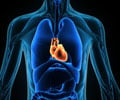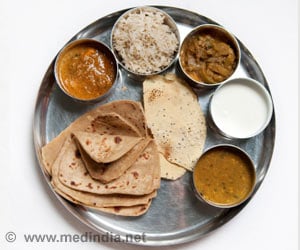The incidence of heart disease in young adults has increased by 10.5% in those residing in urban areas and 6% from the rural areas.

‘Heart disease or cardiovascular disease is a collective term for diseases of the heart and blood vessels. The term commonly includes diseases such as coronary heart disease, heart failure, cardiomyopathy, congenital heart disease, peripheral vascular disease and stroke.’





According to experts, nearly seven percent of patients aged 25-40 in the metros suffer from coronary heart diseases (CAD). "CAD, in which the blockage of coronary arteries -- artery that supplies blood to heart -- takes place, is the most common type of heart disease affecting the youth of the country," Ashwani Mehta, Senior Consultant (cardiology) at New Delhi's Sir Ganga Ram Hospital in New Delhi, told IANS.
CAD -- also known as hardening of the arteries -- is caused by the build-up of plaque. The arteries, usually smooth and elastic, get plaque on their inner walls, making them more rigid and narrowed. The condition then restricts the blood flow to the heart, starving it of oxygen. The plaque could then rupture, leading to a heart attack or sudden cardiac death.
Typical symptoms include chest pain or angina, or shortness of breath -- when the coronary arteries narrow, the heart may not receive enough blood when demand is greatest -- especially after physical exertion.
"At times, there can be unusual symptoms like epigastric discomfort -- pain that is localised to the region of the upper abdomen immediately below the ribs -- jaw pain or left arm pain as well as acute myocardial infarction or heart attack," Mehta explained.
Advertisement
This premature CAD in Indians occurs due to genetic predisposition which includes high levels of low-density lipoprotein (LDL-C) or "bad" cholesterol and metabolic syndrome. When these get coupled with adverse effects of lifestyle factors associated with urbanisation, affluence and changes in diet, it results in risk of an early heart disease -- even death.
Advertisement
"CVD is preventable if one controls sedentary lifestyle and tobacco use, alcohol addiction, foods containing too much salt and low physical activity," Trehan noted. All these factors increase the risk of high blood pressure, high cholesterol, diabetes and weight gain -- leading to heart disease.
Moreover, people with a family history of heart diseases, diabetes and hypertension should get their first check-up done at age 25 and the others at age 30. Early detection can lead to timely treatment and hence reversal of heart diseases.
According to Ritika Samaddar, renowned dietician and nutritionist, processed foods need to be cut down as they are high in calories and sodium (salt). "Saturated fat and trans-fats must be avoided. Instead, healthier fats rich in monounsaturated fatty acids (MUFA) like canola oil should be opted for," said Samaddar.
Consuming fresh fruits and vegetables, nuts and seeds such as almonds and flaxseeds/pumpkin seeds coupled with daily exercise and a stress-free environment can help ward off heart disease risk.
"Interventions should typically begin at school level. Parents, teachers and local governments can play a role in saving our future generation from becoming a prey to the deadly disease," suggested Thomas Alexander, Cardiologist at the Kovai Medical Center and Hospital (KMCH) in Coimbatore.
Source-IANS














